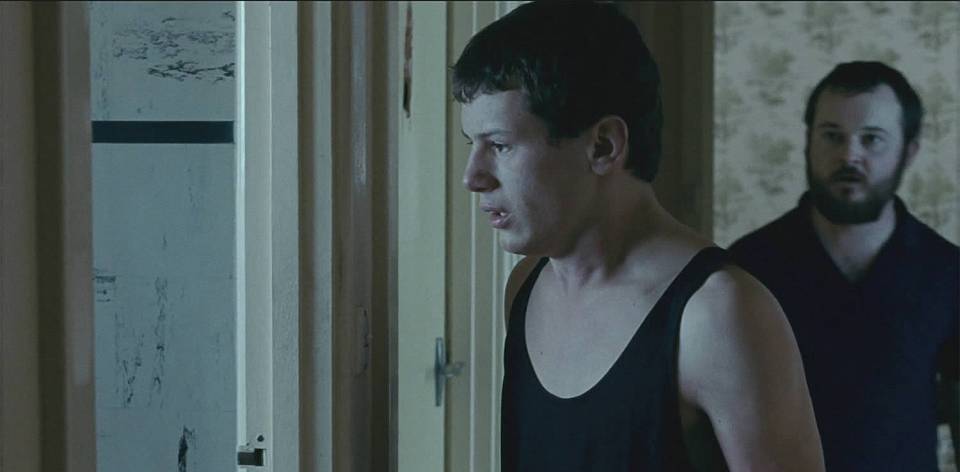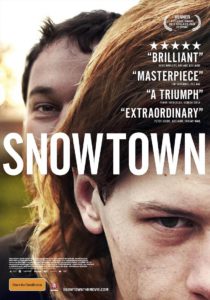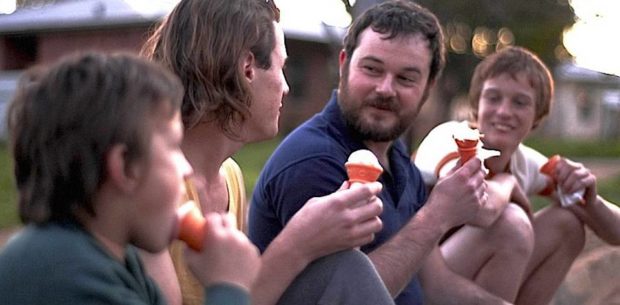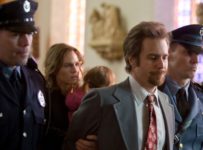The depiction of true crime tales on screen has oft proven a delicate undertaking, with perfecting the balance of information and emotion a tough task. The feat increases in difficulty when the story involves slaughter of the serial variety, due to the frequently disturbing nature of the real life source. Some fictional films focus on the point of view of the many community members – law enforcement officials and journalists, commonly – seeking answers, whilst others attempt to transport the audience into the mind of the killer. From In Cold Blood to Zodiac, Henry: Portrait Of A Serial Killer to Monster, and Bonnie And Clyde to Summer Of Sam, a vast array of such features have tried to portray mass murder in a multitude of ways, some with more success than others. In the first cinematic depiction of the notorious Australian “bodies in the barrels” murders from the 1990s, director Justin Kurzel’s debut feature Snowtown joins the spate of serial killer films that have come before. Delving into the community where the fatal events occurred, it ponders not only the who, what, when and where of the killings, but more importantly, the how.
In the marginalised locality of Salisbury North in Adelaide, South Australia, the inhabitants are overlooked by the rest of the world. Within the grimy suburban landscape lurks both ordinary folk and citizens of the unpleasant kind, including examples of the latter that prey upon single mother Elizabeth Harvey (Louise Harris, in her first film role) and her three sons. The eldest, sixteen year old Jamie (fellow screen debutant Lucas Pittaway), ambles aimlessly without a strong male influence, subjected to sexual abuse from relatives and acquaintances. When charismatic outsider John Bunting (Daniel Henshall, TV’s Out Of The Blue) arrives spouting rhetoric against his definition of neighbourhood degenerates (suspected homosexuals, paedophiles, drug addicts and other undesirables), both Elizabeth and Jamie are enamoured by his ideology. As time passes by, a father-son relationship emerges between John and Jamie, one filled with vandalism, retaliation, animal cruelty, brutality, torture and ultimately serial murder.
The deeds that the harsh and unforgiving nature of the Australian landscape drives its inhabitants to has long been a theme in Australian cinema, with one of Australia’s first recorded features (The Story of the Kelly Gang) chronicling the most notorious outlaw to capture the nation’s imagination. Little has changed in over a hundred years of film, as gripping human dramas continue to be ripped from the headlines in the multi-award winning Animal Kingdom. Yet while a certain distance can be maintained between the exploits of bushrangers and the local mobsters alike, the events behind Snowtown sent a ripple of terror through the South Australian communities precisely because they came out of their own number. To revisit the anguish caused by these brutal murders whilst still within living memory of their perpetration is to invite accusations of exploitation and sensationalism. Indeed, the only reason that one should attempt such a difficult emotional minefield is to answer a simple question: why? From Alfred Hitchcock’s Psycho to John McNaughton’s Henry: Portrait of Serial Killer, along with countless slasher films of the Halloween vein, film has demonstrated that terror (like charity) begins at home. Yet to fully understand how “monsters” are created, one must examine where they came from.
It is from this place that Snowtown begins, examining the suburban angst with an observational lens, choosing not to judge the actions of the characters but simply follow them, and in doing so aims to open a window into their minds. Like the characters it depicts, Snowtown drifts aimlessly from moment to moment, attempting to capture the faceless void that these often savage unfortunates dwell inside. Coupled with Arkapaw’s stark photography, Kurzel comes closest to Terrence Malick’s Badlands at times, but without the beauty that the enigmatic director bestowed upon his killers. In its place is an intense ugliness, a savagery that is not judged, even though to some extent it should be. Almost like a physical barrier between the filmmakers and the audience, Kurzel keeps viewers at a uncomfortable arm’s length, made all the more so by a pounding soundtrack that unnerves the senses. It is difficult, as a result, to fully comprehend what it is Snowtown is trying to say. At the end of the film, after we have experienced impossible anguish alongside both the victims and the killers, we are still no closer to understanding that fundamental question.
Snowtown in undoubtedly a unforgettable film, yet like the crimes upon which it is based, it is often difficult to understand and even harder to watch. Kurzel shows us the place where this terror comes from, but ultimately we are left on our own to find the reasons behind it.
Snowtown is released on May 19, 2011 in Australia by Madman Entertainment.







No Responses